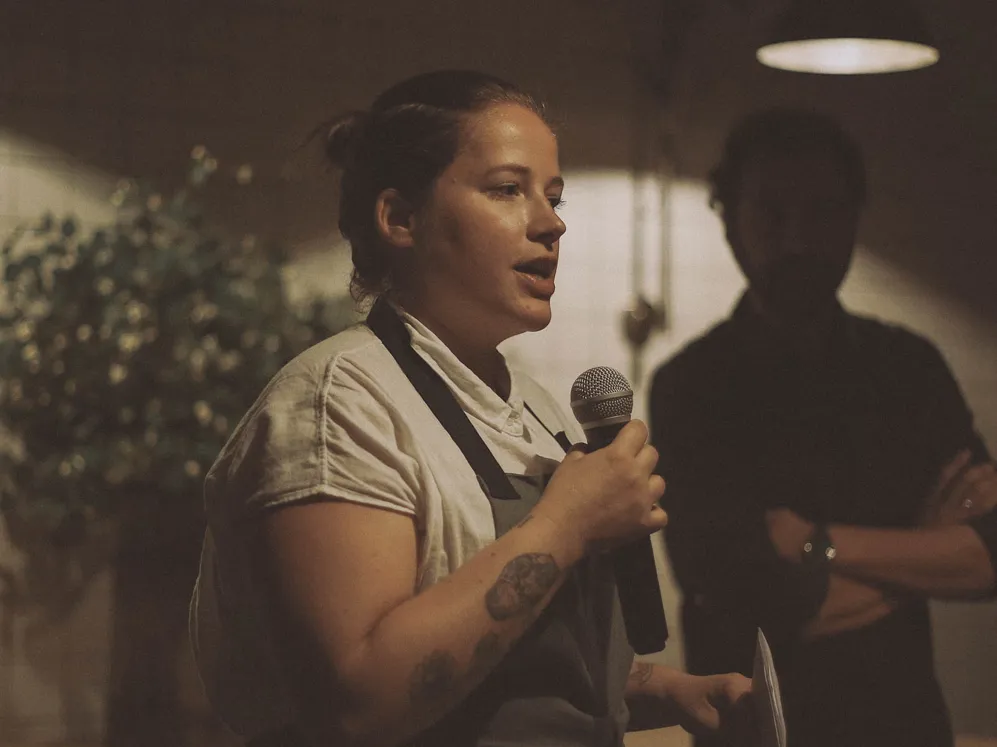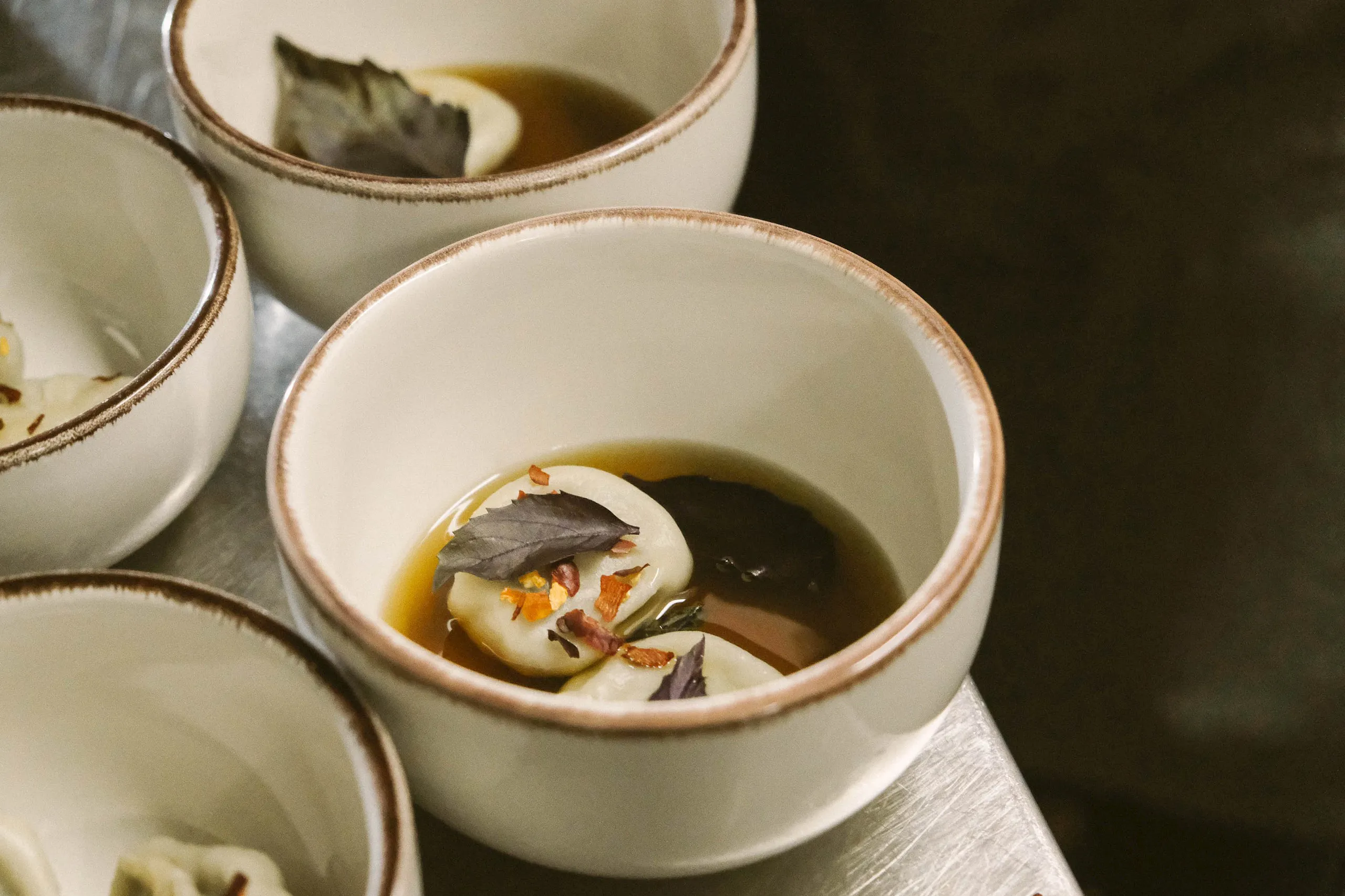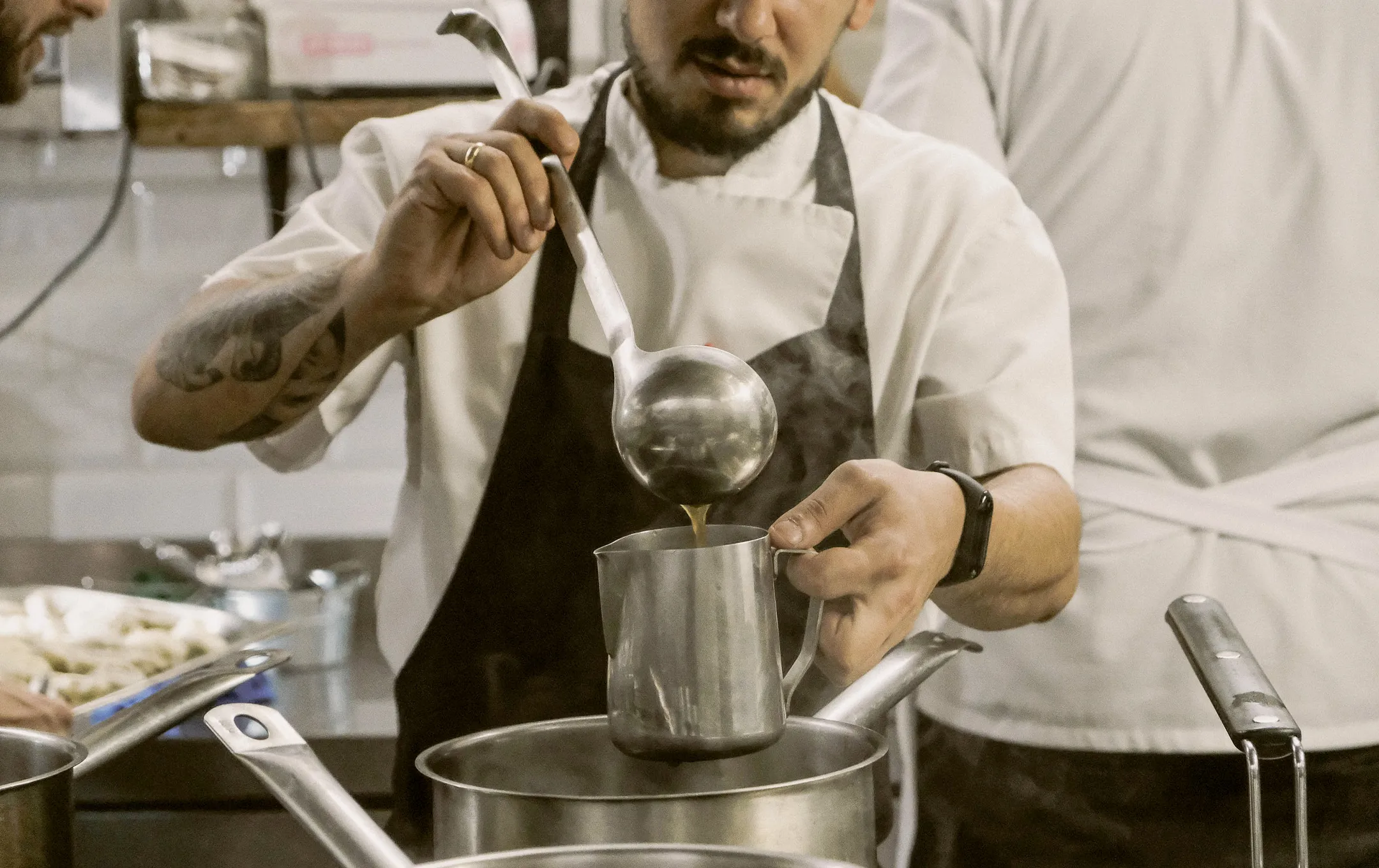Incubating future movements in travel and culture

Words Frankie WechslerImages Anka Gujabidze & Ani Gabashvili
Danish chef Kamilla Seidler has always had an instinct for the future of food. Her pioneering take on Bolivian cuisine at Gustu in La Paz applied the ideas behind New Nordic Cuisine to local Andean food culture. Known in Latin America as “The Dane of the Andes,” she built the menu using local, indigenous ingredients that were often disregarded and worked together with a local nonprofit to empower locals to do the same. After leaving Gustu in 2017, she embarked on the Kamilla Seidler Expedition, travelling around the world to apply the same approach in other locations. She also helped launch the annual Freja Symposium in 2018, an innovative platform tacking gender equality in the Nordic food world—a sorely under-discussed topic. Now Seidler is bringing her progressive, conscientious outlook back to her hometown of Copenhagen, where she recently opened her own restaurant, Lola. We caught up with Kamilla at Further Kazbegi: The Magic Mountain to talk vertical farming, smart hydroponics, better work environments, and the new frontiers of food culture.

How do you view the connection between food and wellbeing?
Kamilla Seidler: Its super connected, but I also think in our industry that we tend to forget the person. We talk a lot about where the fish is caught and it’s being carried in on a silver tray, and then we forget about the people working 18 hours in the kitchen or the people working on the floor to present this food—at least in the restaurant business. What I would like to see is that we connect the food that we eat with the way we treat our staff and our colleagues—and then come together as a whole. Everybody needs their private space in their life. And if we can bring that together and also think about where we source food and what we’re actually eating, then I think that’s the future. I think it needs to be full circle. You can have a very healthy meal, but if you’re eating it very quickly, standing up after 16 hours of working and then need to move on—then it kind of eliminates itself.
And what do you think is the solution?
Seidler: Create better work environments. It’s going to be more expensive. We're going to take home less money every month, but of course we’re willing to put that towards our colleagues’ welfare and wellbeing.
In Bolivia you were helping locals, especially those living under the poverty line, to make better use of healthy local ingredients. Can you speak about what you learned from that experience?
Seidler: One of the major things that I was surprised about was the food waste produced. Because products were fairly cheap, people would not take waste into consideration. Sometimes I would look in the trash and be like, “Who the hell threw all this out?” And then having the conversation, being like, “Guys, you all came from families who maybe couldn’t eat dinner every night—we can’t do this to the products. We paid money for them. And if you’re here to learn how to run a business, if you treat your own business like this, it’s not going to be a business.” It was about getting the team on board and being creative about what to do. If we choose the beetroots, then what do we do with all the pulp? Okay, bake a cake. That’s like the basics, you know? And then seeing that spark and creativity, and then suddenly they were creating stuff where I was like, “Okay, we don't need to use that!” Many times I would go to the countryside to visit the farmers, and they would have incredible potatoes—like 20 different kinds—and they would be super shy about it and hide them away, because that would be poor people’s food—which is completely ridiculous to us as curious chefs. But to them it was just embarrassing. So trying to have the conversation, this is what we need. We don’t need that huge Argentinian imported potato that makes 20,000 french fries from one potato. We need that little crazy purple one over in the corner.

And now you see those potatoes at places like Whole Foods. People are paying a lot of money for them.
Seidler: That would be the conversation, “Like, do you know what this is worth? If you actually grow this and we help you push that product, then we would use it at the restaurant and people would be like, “Oh my God, where’d you get this?” “This is from Marcello's farm.” “Where’s he?” “Well he’s 200 kilometers from here, but you can buy it at the restaurant wholesale.” Then we would sell a kilo of these to people.
Does a chef have the responsibility to source healthy food?
Seidler: I think as a restaurateur and a cook, you have a responsibility to have done the homework for the guests. You have to make sure that the food you’ve sourced is as healthy as it can be. Organic if possible. Local, definitely. You have to do your homework before you serve a dish in your restaurant or in your hotel.
What is the future of food?
Seidler: The future of food—that’s a big question. Hopefully, a healthier approach than now. Now it’s very monetary. I hope we’ll evolve into a strong movement of people who want to eat healthier foods, but also not just, “okay, it’s broccoli, so it’s healthy.” It should be produced in the right way. It should be transported in the right way and the transport distance should be reduced. We need to try and connect all of the dots in food production, to make sure we don’t have to turn over to the back of a package in the supermarket to check how many additives and where it was grown. That for me is the future of food.
What can we do to help make this healthier approach a reality?
Seidler: A little healthy shaming always has its place! At the restaurant that we're opening, we’ve chosen not to serve beef. And that’s maybe a small statement, but it's a statement. And it’s not something we’re going to do a lot to promote. People are probably just going to notice that it’s not on the menu. Then we’ll make sure to source fish that's in season. We’re not going to fly anything in. We can have a lot of spices. We can have a lot of the classic tradable commodities, but source everything local and healthy. As cooks now, apparently we're rock stars. So we might as well use that platform to do something sustainable and send a healthy message.
Food deserts are a real issue in many parts of the world today. How do we bring food closer to where it is needed?
Seidler: Greed is a big problem right now. If we’re willing to share, if we’re willing to pay the right price for products, if we didn’t need that much money in our hands, and if we spread what we have—it could definitely be done. We could feed the planet easily if we used our logistics infrastructure to bring food to the food deserts, instead of transporting some of the more unhealthy options so that there are not places left in the world where you could find a soda but you couldn’t get water, which is insane.
Do you think vertical farming is a potential solution to the problems we’re facing?
Seidler: Yeah, I think vertical farming, hydroponics—there are a lot of different ways to attack it. It’s definitely a way that we could produce healthy options in the future. Again, for places that don’t have a lot of fresh products, or because of climate or money, or different reasons. But I’m scared that it’s going to become something that will turn out to be negative. Like we’ve seen farmed fish become a horrible environmental disaster because somebody had to make that extra money. So I think vertical farming is definitely the way of the future. It’s beautiful to have a vertical farm in a space because it smells nice and it’s part of the daily life. To see a chef go over and cut off a little bit of rosemary and then go back to the kitchen again, it brings people closer to what they’re actually eating, because many people have forgotten.
“We don’t need that huge Argentinian imported potato that makes 20,000 french fries from one potato. We need that little crazy purple one over in the corner.”

Could vertical farming be brought into hospitality?
Seidler: Definitely. I also think it sends the message to your guests that you’re doing something. It also unconsciously helps them to understand why the light turns off in the hall, why there are options that have been removed. So as a guest, if you understand that they have already made the decision for you to move forward in a more sustainable way, you don't have the same demands. With vertical farming, it's beautiful, it smells nice, and it’s part of daily life to bring down costs in food, because you grow you some of your own ingredients.
Can you tell me about computer hydroponics, and if it's something you think you’ll use?
Seidler: A good friend of mine, Rasmus Bjerngaard, started Nextfood a couple of years back in Copenhagen. They wanted to develop a system where they are reading the plants’ needs, and then instead of the plants standing in water, they would create a computer model where they could inject vaporized water, and then the roots would absorb what they needed. Each plant is different and needs different vitamins and minerals. These are purchased organically and then mixed into the water, and then each different mix is distributed to each plant. Then you can know exactly what it’s going to take for my basil to grow for six weeks. It uses 90% less water than hydroponics. We're wasting so much—and the thing is, many times plants go bad because they stand in too much water. What I love about it is it’s open sourced. It's in connection with the Danish Technical University (DTU). Rasmus was like, “We don't want to make money on this. It should be for everybody. ”It’s very exciting and we want to support this way of thinking.
Can you tell us more about your new restaurant?
Seidler: I’ve been cooking for 15 years now. I swore I wouldn't open my own restaurant, but here we are. At Lola we’re going to try and implement a lot of the stuff that we've always missed as employees. All of it isn’t possible from day one, but we're going to try and ask, “Do you want a raise or do you want membership in a health club? Do you want a yoga session every Monday in the morning before we start working?” So it’s not just one person making a decision on behalf of 40 employees. And so we’re going to try and do it very social, but also so people can have a life and grow old in this business—which is a little bit what we’re lacking now.
What is your culinary vision for Lola?
Seidler: I’ve had the opportunities to travel a lot—which is also an issue—but the vision is pretty much to be inspired from all over the world and then source what we can locally. So all the fresh greens, fish, meats, and whatever we’re going to use, will be sourced locally. But then maybe we’ll add curry or we’ll do a Pakistani-inspired dish, but with different ingredients. Do a Thai dish with a Danish fish sauce. So there's space for different flavor profiles, but the products are local.
What does wellness mean to you as a chef?
Seidler: I think wellness means generally being comfortable. When you breathe, you breathe all the way through your stomach. When you eat something, you enjoy the meal, you focus on what's on the plate and where it came from. It’s just being aware of how lucky you are. That's wellness to me.
The Magic Mountain
From primordial chants to operatic loops, Japanese vocalist Hatis Noit combines the experimental with the ethereal to transcend the physical world and connect with our subconscious.
The Magic Mountain

Breathwork master Sascha Zeilinger teaches a form of active breathing that he believes holds a key to healing and wellbeing.